Science Daily News | 28 May 2023

Views (182)
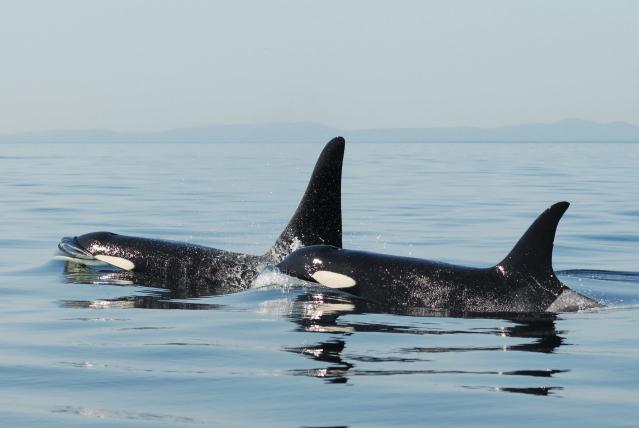
Bison calf euthanized after a Yellowstone visitor lifted it out of a river, causing the herd to reject it
An unidentified man picked up the bison calf after it was separated from its mother as the herd crossed the Lamar River in Yellowstone National Park.
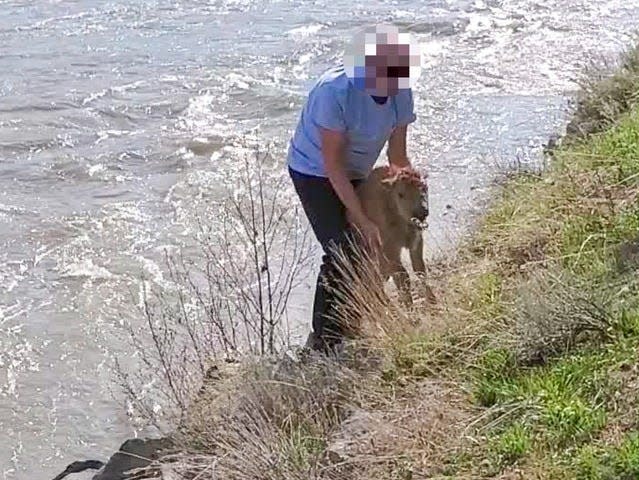
A baby bison was killed after a Yellowstone visitor "intentionally disturbed" it.
Park rangers were forced to euthanize the animal after its herd rejected it, officials said.
Human interference with wild animals can "drastically affect their well-being," they added.
A photograph released by Yellowstone National Park on Tuesday appeared to show an unidentified man lifting the bison calf from the Lamar River, Wyoming, after it was separated from its mother as the herd crossed the river last weekend.
Visitors later reported seeing the calf follow cars and other people, the park service said.
"Park rangers tried repeatedly to reunite the calf with the herd. These efforts failed," the service said.
Officials made the decision to euthanize the calf after it became clear that the herd had abandoned it and it began "causing a hazardous situation" on the road.
The statement added that the newborn calf was not a good candidate for quarantine, as it would not have been able to care for itself.
Human interference with wild animals can "drastically affect their well-being," the park service said, reiterating the importance of giving them space.
Yellowstone Park regulations require that people stay at least 25 yards away from wildlife — including bison, elk, and deer — and at least 100 yards away from bears and wolves, the statement said.
Ignoring these regulations may result in "fines, injury, and even death," the statement said, adding that the safety of both animals and humans depends on following these "simple rules" and using "good judgment."
The calf's body was left in the ecosystem, as would typically happen with the other 25% of newborn bison that die this spring, the Twitter statement added.
"Those deaths will benefit other animals by feeding everything from bears and wolves to birds and insects. Allowing this cycle of life to play out aligns most closely with the stewardship responsibility entrusted to us by the American people," it said.
Orcas ram and severely damage another boat. But a sailor onboard says stop 'demonizing' the 'beautiful creatures.'
A pod of orcas rammed into a yacht, destroying the rudder and piercing the hull. The crew made a Mayday call when the boat filled with water.

A pod of orcas rammed a yacht off the Spanish coast, destroying the rudder and piercing the hull.
The crew was forced to make a Mayday call for assistance when the boat began to fill with water.
Sailor April Boyes wrote that everyone is "safe" and urged people not to "demonize" killer whales.
Earlier this week, a pod of orcas rammed into the Mustique, destroying the yacht's rudder and piercing the hull. Reuters reported the crew later called Spanish authorities for assistance, a spokesman for the maritime rescue service said.
Boyes urged that more research into the "beautiful creatures" needs to be done, especially as the attacks are increasingly common.
According to GTOA, a research group that tracks populations of the Iberian orca subspecies, at least 20 interactions in the Strait of Gibraltar have been recorded this month, per Reuters. Last year, 207 interactions were reported, GTOA data showed.
Other experts, however, believe the encounters with the highly-social creatures may just be "playful."
Bridlington: Zoo celebrates arrival of endangered penguin chick
The chick's grandmother died in March and was thought to have been the oldest Humboldt penguin.
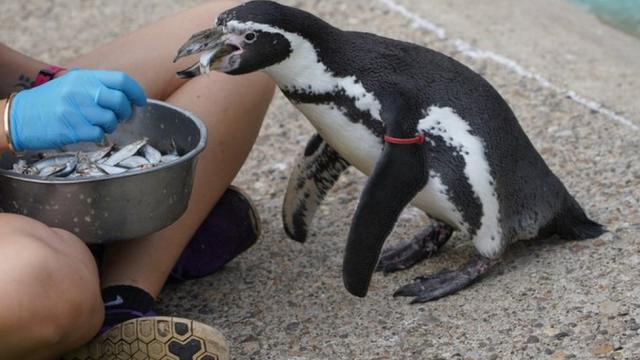
Zoo staff have celebrated the birth of a Humboldt penguin chick a month after they mourned the loss of its 32-year-old grandmother.
Staff at the Bridlington zoo said her new "grandchick" was born on 8 April.
"The chick's safe arrival shortly after Rosie's passing is truly special to us," the zoo said.
Native to South America, Humboldts can live up to 20 years in the wild and are classed as "vulnerable to extinction".
Zookeepers at the Bridlington zoo said they were unable to tell yet whether the new chick was male or female and would not know until it lost its baby feathers and the formation of the head becomes apparent.
Once the chick's sex was known they would give it a name, they said.
Head zookeeper, John Pickering, said: "The chick's safe arrival shortly after Rosie's passing is truly special to us. We miss Rosie dearly but find comfort in the circle of life."
Mr Pickering said the new arrival had been "kept snugly nested, receiving the utmost care and attention from its parents, Sigsbee and Twinnie".
A zoo spokesperson has asked visitors to "respect the privacy of the penguin parents and their newborn, and maintain a considerate distance around the nest during this special time".
The new chick's grandmother, Rosie, had become a star of media and social media across the world, with her 30th birthday celebrations being featured on news channels in the US, Australia, New Zealand, Turkey, and Saudi Arabia.
She was also featured in Hello! magazine and on TV shows across the UK.
Mr Pickering said visitors to the zoo would have to wait until the summer before catching a glimpse of Rosie's latest grandchick, when it would venture out of the nest.
Up to 1.7 billion T. rex dinosaurs lived on Earth, a new study found. But scientists aren't sure where all the bones went.
Scientists have uncovered fewer than 100 T. rex fossils, which begs the question: If 1.7 billion lived on Earth, then where are all the bones?
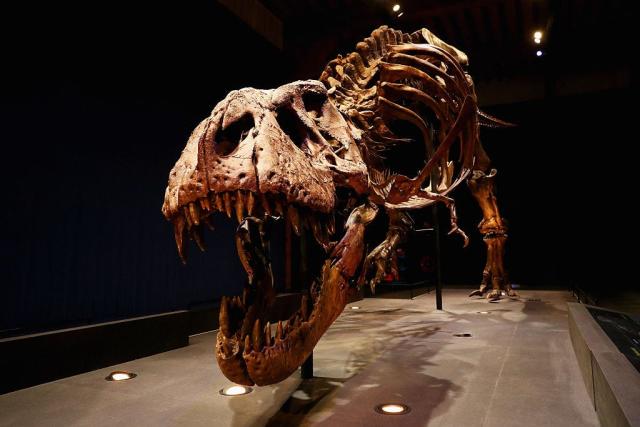
New calculations suggest that 1.7 billion T. rexes lived on Earth from 65.5-68 million years ago.
Scientists have uncovered fewer than 100 fossilized T. rexes, so there may be more to discover.
Only a small fraction of dinosaurs are fossilized because it requires the perfect set of conditions.
So the big question is: Where are all the dino bones?
This dichotomy between how many T. rexes lived and how few fossils we have of them shows us just how rare fossilization is and how much more we have to learn about these majestic creatures.
And scientists have yet to settle on a concrete number.
Marshall and his team created a model factoring in several different variables, including T. rex population density, average body mass index, average life span, geographic range, age of sexual maturity, number of eggs laid, survival rates, and generation time.
In the new study, Griebeler said she "applied a much more realistic survivorship curve" to bring the total number of T. rexes down to 1.7 billion.
"It looks like what she's done is very clever and a significant advance beyond the data that we use in our study," Marshall said. "I've got no complaints. It looks like a better set of survivorship curves than we used."
It's impossible to know for sure exactly how many T. rexes lived during their roughly 2 million years on Earth, but Marshall's model and Griebeler's research provide a reasonable estimate other scientists can build on.
Of the roughly 1.7 billion, or so, T. rexes who roamed our planet, scientists have only uncovered a few hundred fossils, equating to fewer than 100 total dinosaurs.
"If you discover a T-rex tooth during an excavation, that's a big deal for your day or week's work," Stanley said.
Paleontologists are more likely to find fragments of isolated bones, teeth, and claws than a perfectly preserved skeleton of a T. rex or any other dinosaur. And even then, finding any kind of fossil is rare.
That's because the conditions have to be just right for fossilization to occur in the first place.
"Only the smallest fraction of individuals make it to become a fossil, and only a small fraction of those are discovered," Holtz said.
And even if the remains aren't eaten or carried off by other animals, fossilization is also heavily dependent on the environment.
A dinosaur living in the mountains or the open plains, for example, is much less likely to become a fossil because burial is more difficult in those areas than in the lowlands where sediment from the mountains runs off, Holtz said.
"Only individuals that lived and died in the right spots are likely to be covered over by sand or silt or clay and thus possibly preserved," Holtz said.
T. rexes lived in the lowland floodplains with plenty of sediment for burial, which is why scientists actually have more fossils of T. rex and know more about them than many other dinosaurs, Holtz said.
Baby raccoon euthanized after woman took it to a pet store and let people kiss it — possibly exposing them to rabies
The raccoon was handled and kissed by multiple customers, possibly exposing them to rabies. It had to be euthanized to be tested for the infection.
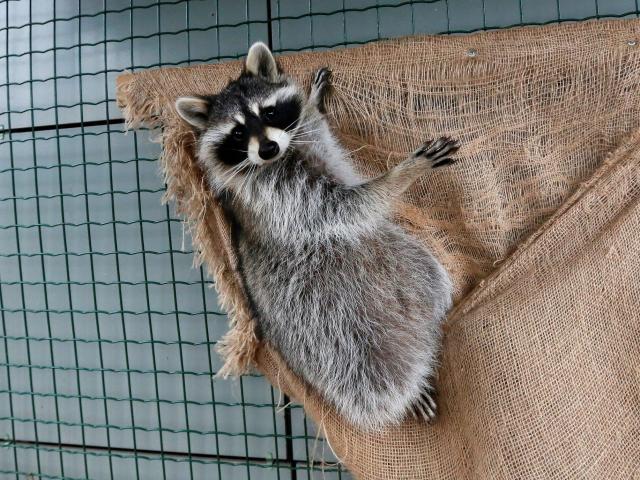
A woman brought a baby raccoon into a pet store in Maine to have its nails trimmed.
The raccoon was handled and kissed by multiple customers, possibly exposing them to rabies.
In order to test if the raccoon had rabies, it needed to be euthanized.
A baby raccoon had to be euthanized after a woman brought it into a pet store to have its nails cut and let people kiss it, authorities said.
Raccoons are one of the most common carriers of rabies in the state, the post said, adding that the infection can be lethal unless treated.
After the store manager became aware of the raccoon on site, they asked the woman to leave and contacted the Maine CDC and the Maine Warden Service, the report continued.
Authorities said that after tests, they could confirm that the raccoon was not infected with rabies and that those who came into contact with the animal did not need treatment.
The department noted that it is illegal to possess wildlife such as raccoons in the state of Maine, adding that "Petco does not trim raccoon nails."
Anyone with information about the woman who brought in the juvenile raccoon is requested to contact the Maine Warden Service, authorities said.
"Please 'Keep Wildlife Wild'" and "If you care, leave them there," the Maine Department of Inland Fisheries & Wildlife reminded people.
Researchers think other orcas are imitating a single killer whale that first started targeting boats, leading some to sink
A killer whale named White Gladis first started confronting boats. Other orcas appear to be following her lead, even sinking 3 boats, researchers say.

Killer whales near the Iberian peninsula are colliding with, and sinking, boats.
Researchers think they may be imitating the behavior of a single female named White Gladis.
It's possible White Gladis was triggered after being hit by a boat, or that the behavior is playful.
The concerning encounters between boats and the orca population off the Iberian Peninsula began in 2020.
Three years later, researchers have documented hundreds of incidents in which an orca directly approached or collided with a boat. In these encounters, the orcas' behavior generally follows the same pattern: approaching the back of the ship and hitting the rudder until successfully causing the boat to stop.
"That traumatized orca is the one that started this behavior of physical contact with the boat," López Fernandez said.
Killer whales are highly intelligent, social creatures, and are known to learn and pick up behaviors from each other, intentionally or not. It's clear to researchers that the behavior is spreading, and that an increasing number of orcas in this specific population are participating.
"We do not interpret that the orcas are teaching the young, although the behavior has spread to the young vertically, simply by imitation, and later horizontally among them, because they consider it something important in their lives," López Fernandez told LiveScience.
Another expert told Insider that the behavior may indeed be the result of imitation, but perhaps with a different intent: play.
"They're very tactile. They have a sense of touch," Trites said of orcas, explaining that they are known to rake their teeth over the body of another killer whale, as well as rub and bump into each other. He thinks the interactions with boats are likely a "playful activity that's gotten way out of hand."
If White Gladis was indeed struck by a boat and traumatized, he thinks if anything she would go out of her way to avoid colliding with one again, rather than ram into them. He also said the fact that other orcas are mimicking and adopting the behavior suggests they are benefitting from it or gaining pleasure from it, which also indicates play.
Even if all the orcas in the Iberian population, around 39 at last count, end up imitating and adopting this behavior, it's unlikely it will spread to killer whales elsewhere, such as populations around North America.
"There's very little chance of them learning from the group in Spain and Portugal, in part because the different ecotypes of killer whales around the world don't interact with each other. They keep apart," Trites said, noting that orca populations represent different ecotypes that eat different foods and display different behaviors.
But if more and more orcas of the Iberian population continue to clash with boats, it could eventually result in serious injury or death to a person or a whale.
Or, Trites said, the killer whales might just get bored with the boats and stop taking part.
0 Likes
